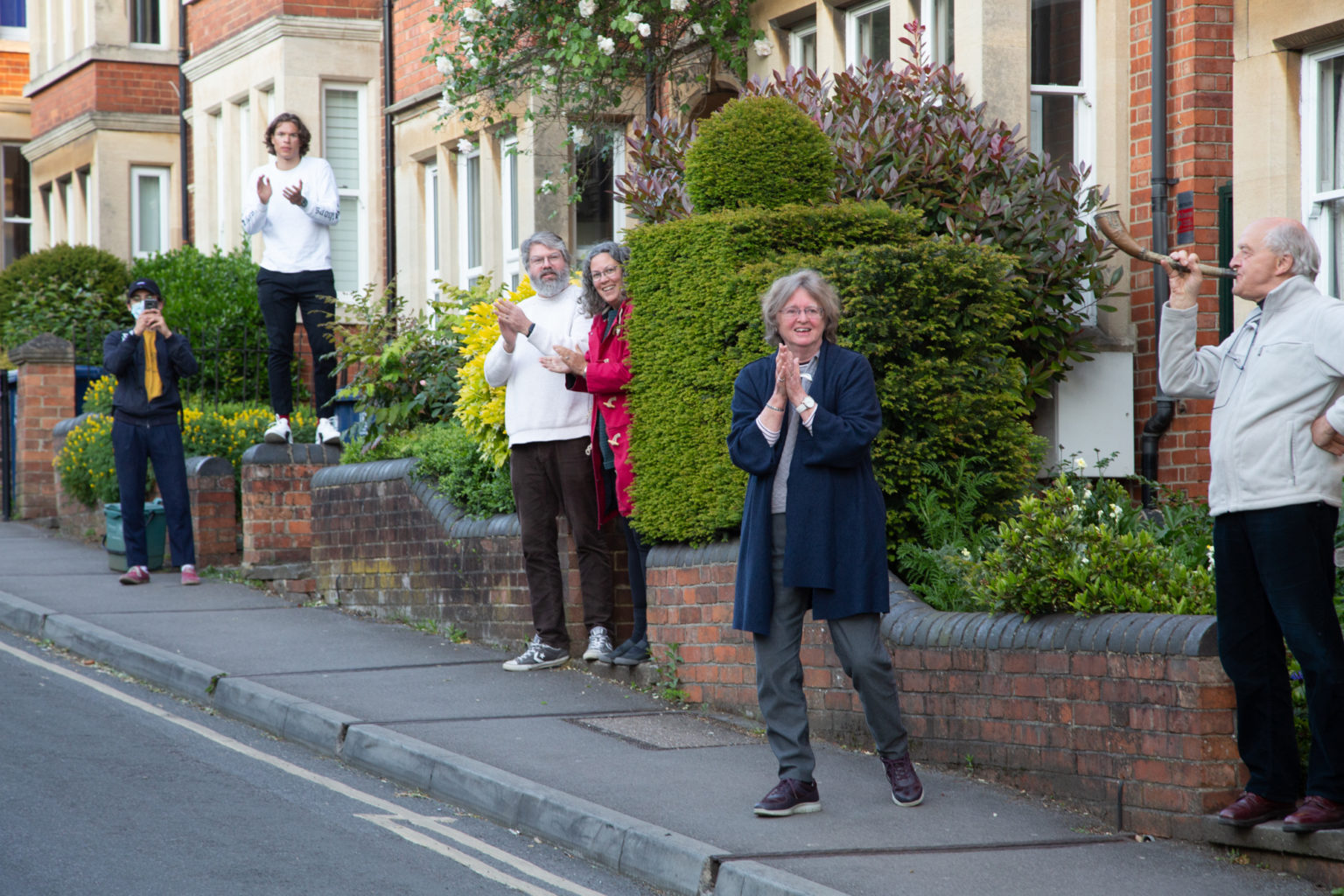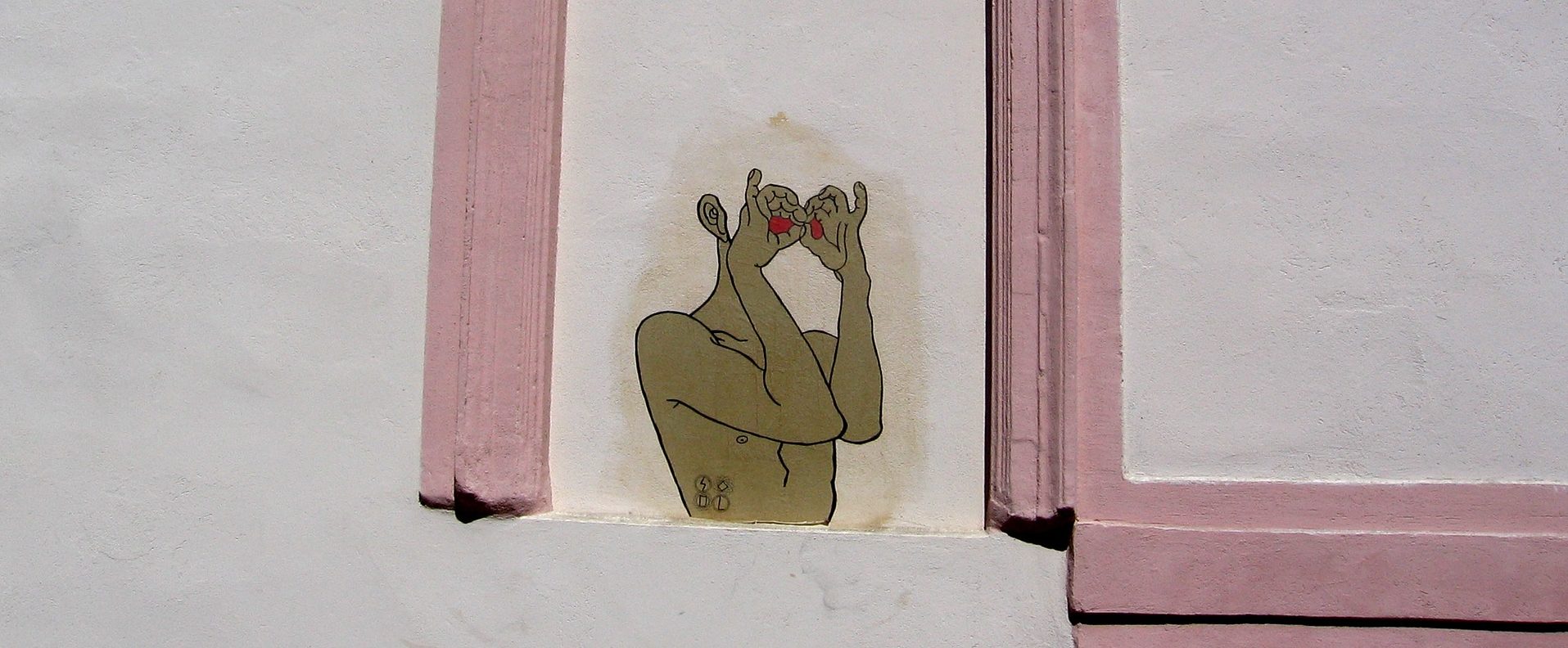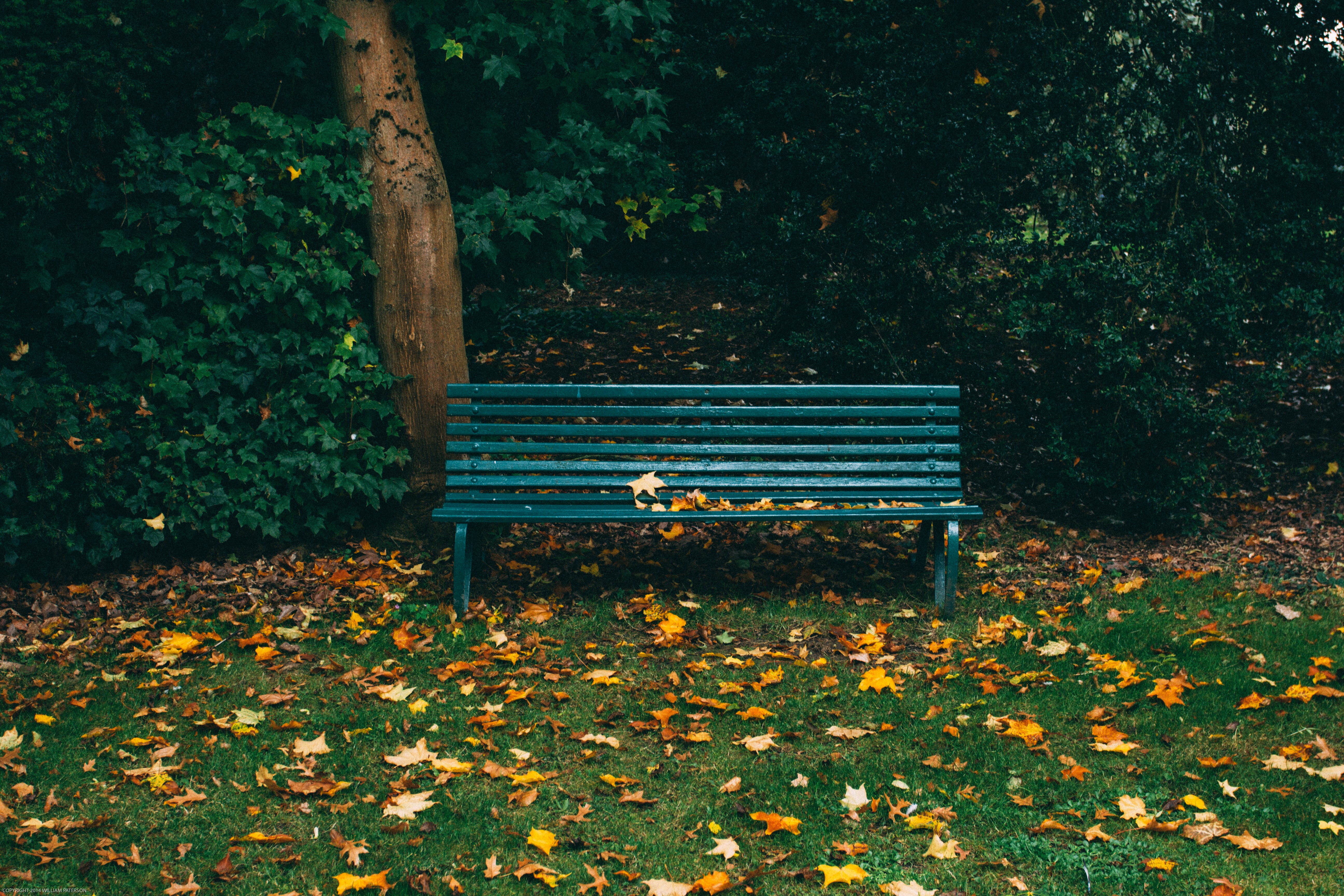The Divinity Road project , organised by Martin Stott aimed to photograph everybody who lives on Divinity Road, Oxford, over about a three year period, starting in July 2018. This included individuals, couples, families or groups of people living in the same house such as students. Divinity Road is a long street, a diverse one (27 different nationalities and counting) and a notoriously transient one.
This is primarily a photography project, but it is also a slice of social history in the making, and a community-building project as well.
Nancy Holman (NH), Director of the Regional and Urban Planning programme at LSE, was kindly given the opportunity to discuss the project with the creator Martin Stott (MS), the result being the interview below.

_______________________________________________________________________________________________
NH: I have been really pleased to get to do this interview with you as it, and lockdown, has given me time to really look at the photos you have done over the last two years. It is a wonderful archive and one of the things that urban historians and sociologists look on with glee when they are discovered years later.
MS: Thank you for your kind words. I certainly see this as a social history resource which people can examine in thirty years or so’s time and gain insight from. In the here and now it is also a chronicle of our times including the traumas of Brexit, a divisive General Election, Black Lives Matter and the global pandemic of COVID19, as well as being an examination of the quotidian on one street; looking at the overlooked, making the invisible visible, identifying connections that aren’t obvious, and being quite explicitly, a community building project.
NH: Thinking about compilations of the photos you have done, like these and the ones on the Bhopal disaster in India and the UK worker co-operative movement – what do you think that they add to our understanding of the urban, the social, the political nature of places and events?
MS: I have always seen myself as a socially engaged documentary photographer. This means that I sometimes have a slightly conflicted viewpoint; observer or participant? I’m trying to be both and for long term projects, which all of these are or were, I will sometimes put my camera down in order to be a participant. So the worker co-op project took about five years, while I was working in or with the co-op movement. I worked in Bhopal in1985-86 for Quaker Peace and Service after the world’s worst industrial ‘accident’ in late 1984 and I’m in in my third year working on the Divinity Road project having lived on the street for well over three decades.
By being close up and engaged over a long period it is possible to uncover or reveal elements that have been hidden or ignored. Divinity Road is on the surface, a fairly ordinary bourgeois street in Oxford, a wealthy city in England. But its housing stock and its geographical location make it much more complex. Indeed in 2006 the market research company CACI identified it as the street with the widest range of household incomes in England. The large Victorian properties are suitable for middle class professional families who don’t have the money or desire to live in wealthier parts of the city; they are also ideal as student houses in in multiple occupation (HMO’s); for larger multi-generational extended families often of south Asian origin; as bed-sits or ‘rooming houses’ for marginal groups, often immigrant, who work in low paid and insecure jobs; as places suitable for agencies to acquire to house homeless people often recently out of prison or mental hospital; and as elements of the judicial system such as bail hostels. I can point to all of those within 250m of my front door.
It works because there is strong community organization chiefly through the Divinity Road Area Residents Association (DRARA) and because people who choose to live in the street (not everybody does of course, some are assigned to properties) know what to expect and enjoy the cultural diversity that it brings, particularly on neighbouring Cowley Road. My photographs make much of this more visible, prompting thought amongst those who see them, a greater sense of community as people recognize others on the street as their neighbours from the pictures and a better understanding of the issues facing the community – which has been helpful during the current pandemic in terms of identifying and supporting vulnerable and isolated groups and individuals.
NH: It seems to be a remarkable privilege to have been invited into so many homes to photograph residents. Transience, technology and shrinking place-based social networks are often linked to a break down in trust, with people retreating into their own social bubbles of like-minded friends. You seem to have broken through some of these barriers.
Having done this, does it strike you that the people who live on Divinity Road have more in common with one another than they understand, and do you think that commonalities are necessary per se to build communities?
MS: There are two elements to this, the personal and the political. On the personal level, I have lived on the street since the 1980s and have been the local councillor, chair of the residents’ association, street champion in the current pandemic (one of three, it’s a long street!) and activist for as long as anyone can remember. Over the decades in these roles I’ve built up a pretty high level of trust with many people on the street so that even if I didn’t know a household I was interested in photographing personally, I would know someone who could introduce me and vouch for me.
At a wider political/social level, I wouldn’t want to romanticize the community-mindedness of the residents. There are certainly elements of common experience that unite people, but the lack of knowledge let alone understanding, of other groups can sometimes be quite startling. While photographing and interviewing one of the residents of a Homeless Oxfordshire house recently, I was struck by his volunteering that when he moved into the street he had expected it to be quiet and peaceful in comparison to his previous life – only to be shocked by the noise and general late-night raucousness of nearby student houses, a feeling he would definitely share with long-term residents. Whether that is the kind of ‘commonality’ you had in mind I’m not sure! I would say that despite the great work of DRARA, the street is really made up of several communities who rub along together OK but generally don’t have all that much interaction. COVID19 and the lockdown has had a significant impact in breaking down some of those barriers as people having been confined to the locality for weeks on end have got to know each other better.
However, while we may find some of our neighbours annoying (or invisible) on occasion, we all experience common concerns such as traffic. The street is a rat-run with 6,000+ vehicles passing along it every day, a third of them speeding. So noise, air quality, and pedestrian and child safety (especially as it is the main walking route up from east Oxford to the local secondary school at the top of the street) are certainly commonalities shared by all residents on Divinity Road.
NH: Personally, I am someone who loves serendipity and the unexpected, so I was surprised and pleased one day last year on my walk along the river near Hammersmith. I popped into the William Morris Society and on the wall looking back out at me was your name. I had no idea of your connection with the Society. How has Morris impacted on your development as an urbanist and do you also find him influencing your photography?
MS: Yes, Morris has been a big influence on my life ever since I read EP Thompson’s ‘William Morris: romantic to revolutionary’ at the end of my time at LSE over 40 years ago. I was Chair of the Society for several years up to 2018. Morris was revolutionary socialist in the latter part of his life and understood the impacts of rampant Victorian capitalism and gross inequality on people’s life chances. His book ‘News from Nowhere’ sets out a vision of a future society in which societies and cities are drastically different from those of his day – or our own. He was also a believer in creativity and beauty as a means to lifting the human spirit; ‘Have nothing in you houses that you do not know to be useful or believe to be beautiful.’, and extended that to ways of living, describing Victorian housing in a formidable lecture entitled ‘Makeshift’ in 1894 as ‘the worst planned, the most uncomfortable, the most unreasonable…’
His vision had echoes of the Garden City movement, and both Ebenezer Howard and Raymond Unwin were fans. In the final analysis though, his view was integrative. He understood that successful cities needed nature and culture, but importantly his politics recognised dimensions that remain important touchstones with us as urbanists; the quality of housing and the need for municipal housing, protection for renters, air quality issues, the importance of public health, the need for the provision of high quality public goods such as parks and libraries, and even concerns about the length of journey times for workers into cities.
Morris is chiefly remembered today for his design rather than his politics. His interest in photography was minimal but his success as a designer was in close observation, and understanding the significance of detail, especially in the natural world, and developing that in his designs; think ‘Daisy’,‘Trellis’ or ‘Vine’. Close observation, compositional skill, and patience are key skills that he understood and practised and that any photographer needs. Identifying and then waiting for the right circumstances – light, mood, pattern, (decisive) moment, are critical. Morris said ’Don’t copy any style at all, but make your own’ and like other artists, photographers aspire to an instantly recognizable style – think Robert Mapplethorpe or Ansel Adams. This isn’t easy, and all photographers are of course influenced by other photographers and other artists. In my case in the context of this project I would cite, American performance artist, ceramicist and urban regenerator Theaster Gates, a real inspiration, and photographers who are chroniclers of cities and the human condition, including Berenice Abbot‘s wide ranging work on New York, Paul Strand’s marvelous chronicle of an Italian village ‘Un paese’, John Myers (‘The Portraits’, ‘Looking at the overlooked’), Sirkka-Liisa Konttinen and Marketa Luskacova’s work in 1970s and 80s North East England (‘Byker’,‘By the sea’), Stephen Gill’s work on East London (‘Hackney Wick’, ‘Archeology in reverse’) and my friend and neighbourhood chip shop proprietor, Kazem Hakimi (‘Portraits from a chip shop’).
NH: Finally, what would you say is the biggest lesson that we can take away from the Divinity Road Project?
MS: I think that there are two that are interconnected. One is that in the 30+ years I have lived on the street it has become both richer and poorer at the same time. This is a reflection of national and international trends, but a bit like putting a frog in cold water and turning the heat up, you don’t notice until you step back and examine the evidence in front of you that photography brings into focus. The other is that cities are complex, more so than we realise. They are very networked and global but not necessarily in the ways that the media often characterize global cities (Oxford is a global ‘brand’). For example there is a significant but almost invisible Algerian community living on the street. They didn’t come here to study, or for the research and innovation opportunities for which Oxford is globally renowned, but rather to work in the kitchen of a care home, in security, or a family sandwich-making business. But their networks are just as global as those of a foreign policy expert or nuclear scientist.
Divinity Road photo exhibition by Martin Stott
After the exhibition’A street in a Global Pandemic’ hosted by the Birmingham University-based project Arts of Place (AoP) in January 2021, during the Oxfordshire Artweeks Festival, the Divinity Road Co-op will host from 12-15 May the interactive exhibition organised by the Divinity Road Area Residents Association (DRARA) showcasing photographer Martin Stott documentary photographic exploration of Divinity Road.
Professor Alexandra Harris introduces the exhibition saying: ‘Martin has been trying to know his street for over 30 years. He’s poised between the objective recorder and the long-term neighbour. He’s photographing his place with a curiosity and attention that comes from loving it. But he knows that streets are changing and that neighbourhoods are best not taken for granted.’ Here, Professor Alexandra Harris chooses a small selection, and recommends a visit to Martin’s website where you can see the full series.
The exhibition will be immersive and interactive, with opportunities to comment on it, add to it, nominate your favourite picture (and say why) and even contribute direct to the website via a QR code.
LEARN MORE ABOUT THE EXHIBITION
Martin, who is also part of a group exhibition at the Martin Parr Foundation in Bristol called ‘Documentary, zines and subversion’, will be there to discuss the work and sell his photobooks Wear a mask! Oxford pandemic portraits (Signal Books) and English Worker Co-operative Movement 1980s (Café Royal Books). It will be an opportunity for DRARA residents to react, respond and participate in a piece of social history in the making.

Images is © Martin Stott.



